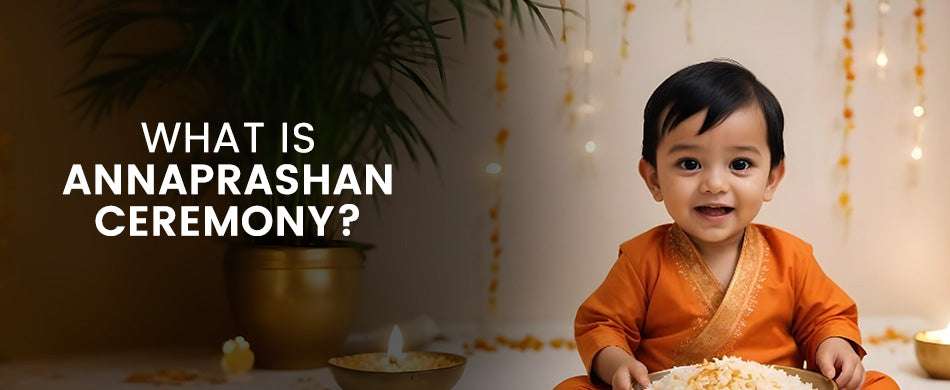
Annaprashan: The First Solid food of Your Baby
- by Babyorgano Developer
- 1 min 16 sec
Table of Contents
Typically celebrated when a child is 5-6 months old, the Annaprashan ceremony acknowledges your baby's first introduction to solid food. Also known as the Pasni ceremony, rice feeding ceremony, or first rice ceremony, this tradition symbolizes the child's growth and development.
Annaprashan comprises two Sanskrit words: Anna, which denotes cooked rice, and Prashan, which means feeding.
Most families give rice to their children as the first solid food. This is because rice is considered sacred in most cultures and religions. Further, the child is fed using silver cutlery during the ceremony because it is a non-reactive metal, safer than iron, steel, or clay.
What to do in an Annprashan Ceremony for a Baby?
Given below are the various rituals involved in performing Annaprasana for a baby:
1. Prayer offerings
The Annaprashan ceremony is usually organized at home or in a temple in the gracious presence of family and friends. Like most rituals, the function starts by offering prayers to Goddess Annapurna, who blesses people with food and nourishment.
Parents seek blessings for their children's good health and growth. Before the ceremony, they also worship Lord Vishnu.
2. Feeding the Baby
In the next step, cooked rice or kheer is served in a silver bowl or plate. Depending on the traditions, the father, maternal grandfather, or any other family member feeds the child using a silver spoon. In many cultures, a gold ring is dipped in the kheer and touched to the child’s tongue.
It is best if the mother or father holds the baby during the ceremony to ensure the child remains comfortable and calm.
3. Other Rituals
Other rituals may also be included, such as a game in which the baby chooses from a tray of objects, each representing a different area of interest in the future. For example, a book represents good learning, a pen denotes wisdom, and jewels signify wealth.
In many cultures, aura cleansing, chants, and bathing the baby with Chandan and Haldi are also part of the rituals.
4. Feast
The ceremony concludes with a food spread for family and friends. This can include all the delicious dishes and beverages liked by the family.
Besides food, you can give your child the power of Suvarnaprashan, an Ayurvedic immunity booster for babies. Made with 24CT Gold Ash and 10+ herbs, it supports growth, improves digestion, and strengthens cognitive function.
That’s a wrap! We hope you will find this Annaprashan ceremony guide helpful in understanding the beauty of this ritual and the related practices.
FAQs
Q1. Which God is worshipped in Annaprashan?
Ans. Annapurna, the goddess of food and nutrition, is offered prayers during the Annaprashan ceremony.
Q2. How to calculate the day of Annaprashan?
Ans. The ceremony is performed for boys in their 6th, 8th, 10th, or 12th months of birth. Conversely, for girls, an odd month like 5th, 7th, 9th, or 11th is chosen for the ceremony.
Q3. Is there a specific sweet dish for Annaprashan?
Ans. No. You can choose any sweet dish to offer to God and later distribute it to your family members.

